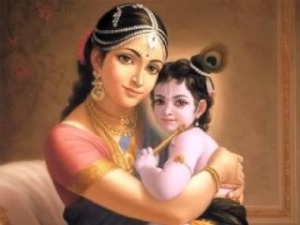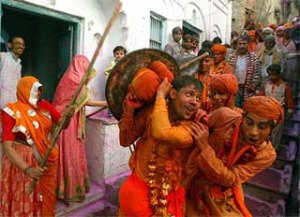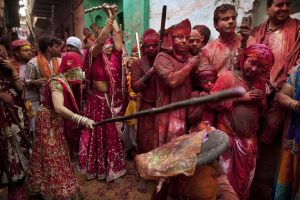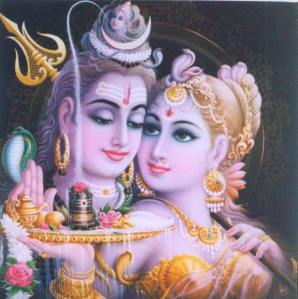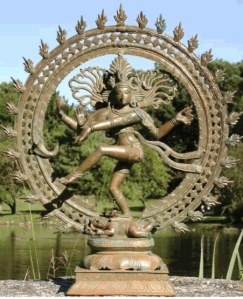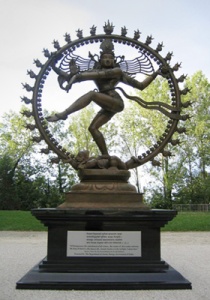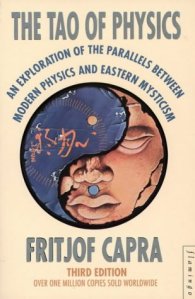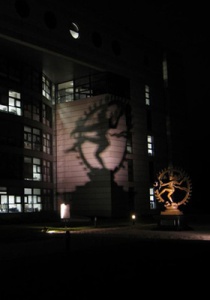Well, one festival which connects all these is the festival of colors, Holi.
In this post we will look at all the legends associated with Holi.
1. Holika
The most ‘popular’ event associated with Hoil is the burning of the demoness Holika. Infact the name ‘Holi’ is a shortened version of the name ‘Holika’.
Legend has it that there was a great king of Asuras called Hiranyakashipu. He pleased Lord Brahma with severe tapasya and got a boon that he could not be killed 'during day or night; inside the home or outside, not on earth or in the sky; neither by a man nor an animal; neither by astra nor by shastra'. He became so self obsessed that he forbid worship of any God and in fact declared himself as the ‘Master of one and all’. But such is Prabhu’s maya that his own son Prahlada turned out to be a great devotee of Lord Vishnu.
[caption id="attachment_699" align="aligncenter" width="254"]
 Hiranyakashyipu threatening Prahlad to stop worshiping Lord Vishnu[/caption]
Hiranyakashyipu threatening Prahlad to stop worshiping Lord Vishnu[/caption]Hiranyakashipu couldn’t digest the fact that his own blood was going against his wishes. After trying very hard to pursue Prahlad to stop worship of Vishnu, Hiranyakashyapu reached a stage where he thought that killing his son was the only solution to end this ‘revolt’.
[caption id="attachment_700" align="aligncenter" width="300"]
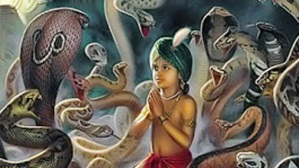 Prahlad locked up with snakes[/caption]
Prahlad locked up with snakes[/caption]He poisoned Prahlada; but the poison got converted to nectar in his mouth.
He ordered Prahlada to be trampled by elephants; but Prahlada remained unharmed.
He put Prahlada in a room with hungry, poisonous snakes; no damage was done to Prahlada.
He threw Prahlada down a cliff; Prahlada easily survived the fall.
Thus all of Hiranyakashipu's attempts to kill his son failed.
Finally, he decided to employ the services of his demoness sister Holika in order to ensure the killing of Prahlad.
Prahlad was made to sit on a pyre in the lap of Holika.
Now the logic behind this was that Holika had a boon that she couldn’t be burned by fire.
So the plan was to make Prahlada burn while Holika would be unaffected by the fire. Prahlada quietly went and sat on Holika’s lap. The only thing he constantly did was to take the name of the Almighty - 'Om Namo Narayana'.
[caption id="attachment_696" align="aligncenter" width="300"]
 Holika gets burnt in the fire and Prahlad remains unharmed[/caption]
Holika gets burnt in the fire and Prahlad remains unharmed[/caption]When the pyre was lit, much against the expectations of people around, Holika was affected by the heat of the fire and slowly her body perished. On the other hand Prahlad was untouched and unaffected by the fire.
This event is known as Holika Dahan.
[caption id="attachment_697" align="aligncenter" width="194"]
 Holika Dahan, on the eve of Holi[/caption]
Holika Dahan, on the eve of Holi[/caption]Even today bonfires are lit on the eve of the Holi festival to commemorate Holika Dahan.
2. Dhundhi
In the kingdom of Prithu there was an ogress called Dhundhi.
Now Dhundhi, had a boon from Lord Shiva that she could not be killed by Gods, men nor suffer either from arms or from heat, cold or rain. These boons made her almost invincible. but there was a catch. She was also cursed by Lord Shiva that she would be in danger from young boys.
Because of this Dhundhi used to trouble little children in particular.
Prithu was alarmed by this terror of Dhundhi. He consulted a lot of people and a solution was arrived at. It was decided that on last full moon day of Phalguna, when the season of cold vanishes and summer begins, young boys with bits of wood in their hands would go out of their houses, collect a heap of wood and grass, set it on fire with mantras, clap their hands, go around the fire thrice, laugh, sing and by their noise and laughter Dhundhi would die.
The plan worked and since that day Holi is celebrated at the end of the winter season on the last full moon day of the lunar month Phalguna.
3. Pootana
This legend is about Pootana. Pootana was summoned by Kansa, ruler of the Vrishni kingdom to kill Krishna, his nephew, as it was foretold to Kansa that Devki's 8th son i.e. Sri Krishna would kill him.
Just like Hiranyakashipu had tried numerous times to kill Prahlad, Kansa also made a lot of attempts to kill Krishna.
One such attempt was through Pootana. Kansa called Pootana and ordered her to go down to Gokul immediately. Pootana assumed the disguise of a young beautiful woman and entered Krihsna’s home town. Somehow she managed to distract all the women of the town and while they were away from their babies Putana made the babies suck her breast which had been smeared with poison. Thus slowly and slowly all the new born babies of Gokul died. Finally when Pootana came into Nand and Yashoda’s house and made Krishna suck her breast, she was in for a surprise. Krishna squeezed her breasts and sucked her milk as well as her life.
[caption id="attachment_701" align="aligncenter" width="300"]
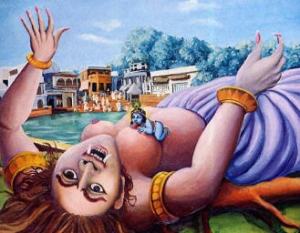 Pootana's life sucked by Krishna[/caption]
Pootana's life sucked by Krishna[/caption]Pootana couldn't bear the pain and went back to her real demonic form. She ran out of the house with Krishna still clinging to her. When the people of Gokul arrived at the place where Pootana fell, they were stunned to see small Krishna still alive and the dangerous Pootana dead.
The people of Gokul were releived that no harm had been done to Krishna and decided to hold a special celebration. Since then this celebration has become a part of the many legends associated with Holi.
This legend is particularly famous in the state of Goa.
4. Kaama Deva
Sati and Lord Shiva were happily married to each other. Once Sati’s father Daksha organised a yagya, but did not invite Sati or Shiva as he had an altercation with Shiva in the court of Brahma. But, Sati who wanted to attend the yagya, went even though Lord Shiva did not appreciate the idea. To here great anguish, Daksha ignored her presence and did not even offer a place for Shiva. Sati felt humiliated and was struck with profound grief. She jumped into the yagna fire and immolated herself.
Lord Shiva became extremely furious when he heard the news of Sati’s immolation. Carrying the body of Sati, Shiva began to perform Rudra Tandava (dance of destruction) and wiped out the kingdom of Daksha. Everybody was terrified as Shiva’s Tandava had the power to destroy the entire universe. In order to calm Lord Shiva, Vishnu severed Sati's body into 12 pieces and threw them on earth. It is said that wherever the pieces of Shakti’s body fell, there emerged a Shakti Peetha.
Lord Siva undertook rigorous penance and retired to the Himalayas. Sati took a re-birth as Parvati in the family of God Himalaya. She also started performing penance to break Shiva’s meditation and win his attention.
During this time a demon by the name of Tarkasur terrorized the Devtas and became the ruler of the world. Tarkasur had a boon that he could be only killed by the son of Lord Shiva.
[caption id="attachment_704" align="aligncenter" width="300"]
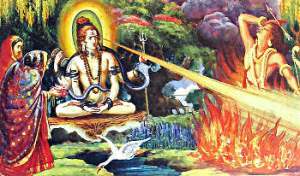 Shiva opening Third-eye and turning Kaama Deva into ashes[/caption]
Shiva opening Third-eye and turning Kaama Deva into ashes[/caption]As Shiva was paying no heed to Parvati's tapasya, the Devtas requested Kaama Deva (also known as Madan) to accelerate the process of bringing together Shiva and Parvati. So Kamadeva shot his love-arrow on Shiva's heart. A deeply disturbed Lord Shiva opened his third eye and the fury of his third eye instantly turned Kamadeva into ashes. Kaama Deva's wife Rati requested Shiva to restore her husband's life. Shiva agreed to Rati's request and granted immortality to Kamdev, but added that Kaamdeva would exist in a disembodied (free from a body) form. Since this day Kamadeva is also known as 'Ananga' or 'Atanu' (both meaning 'without body').
This event is celebrated as Kaama Dahan in southern parts of India.
Thus we see that Holi might be given any name, but the essence and message of Holi remains the same - eliminate and burn the negativities inside us (just like Holika, Dhundhi, Pootana and Kaama Deva were burnt) and lead a positive and colorful life.
Wishing all of you a very Happy Holi :)
